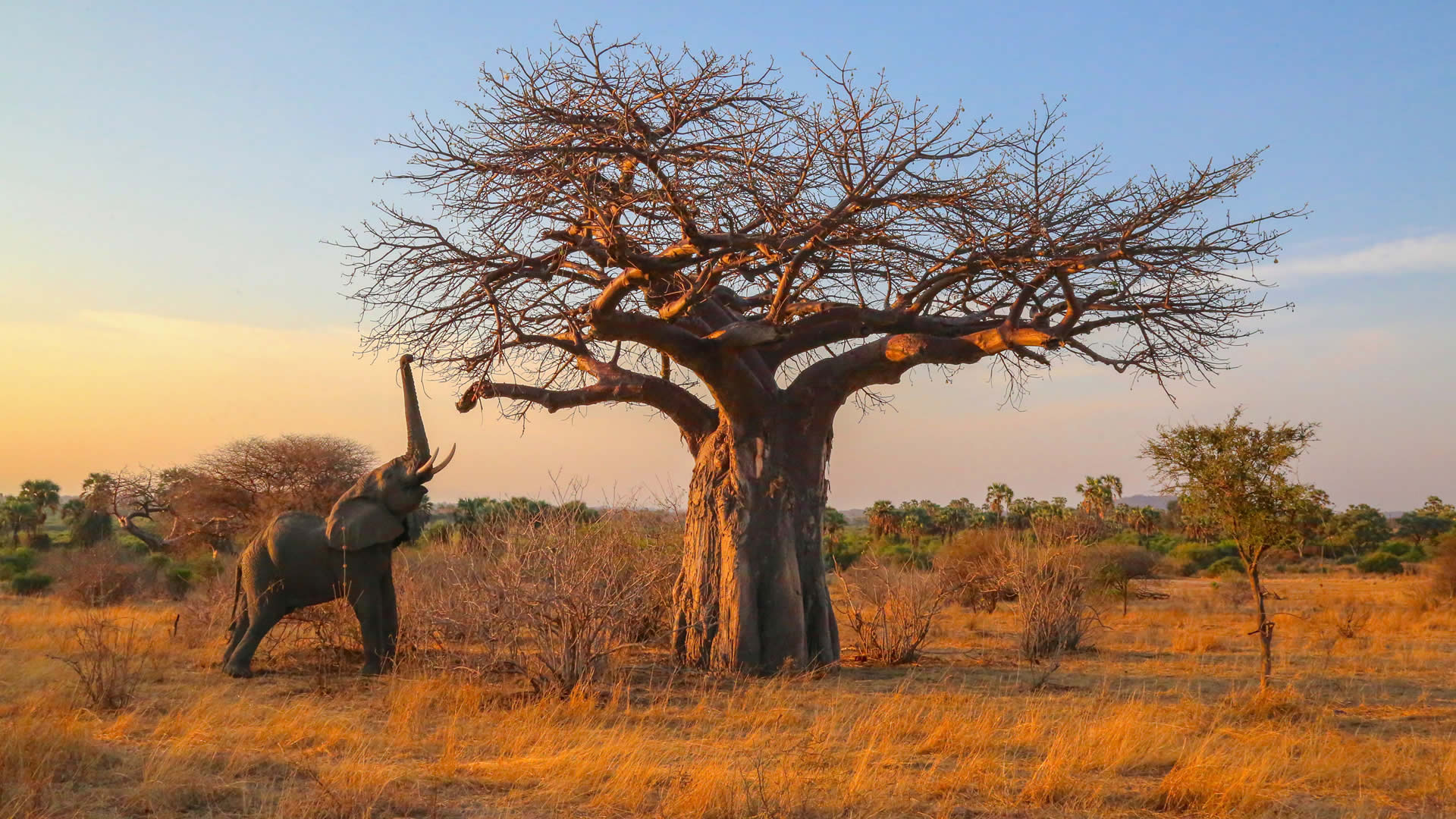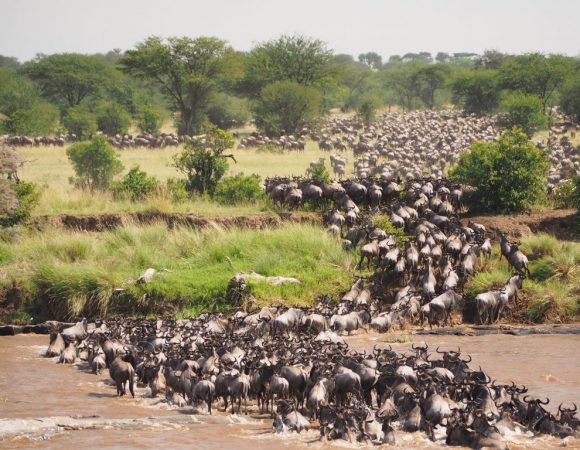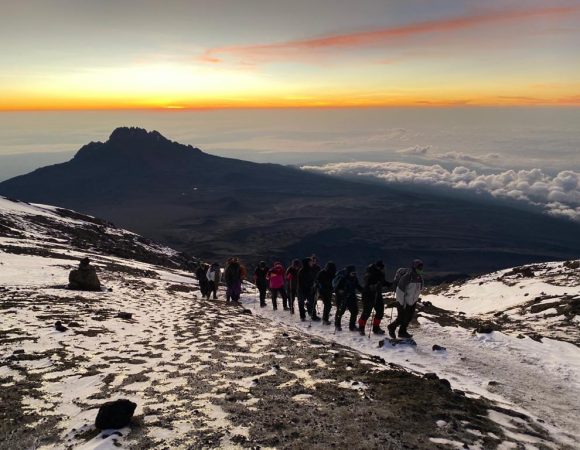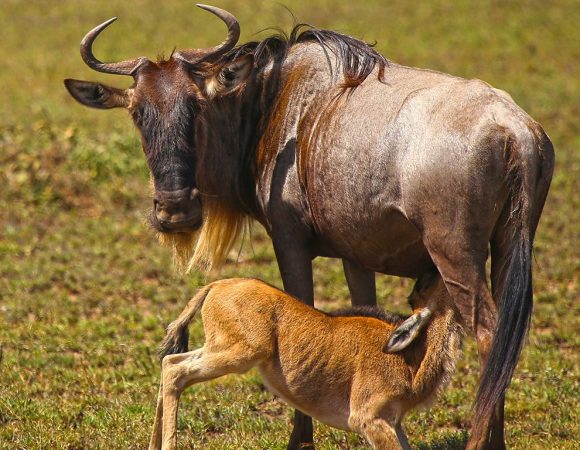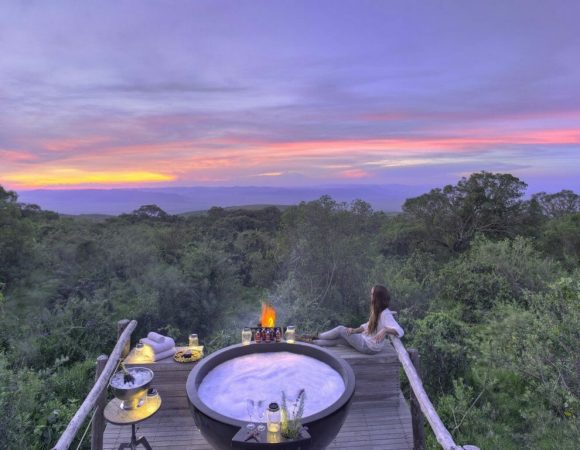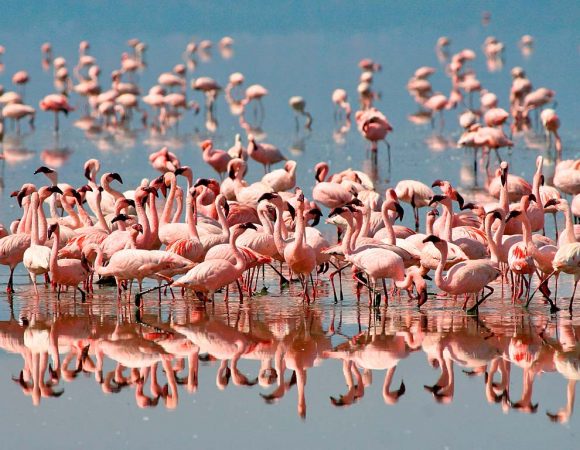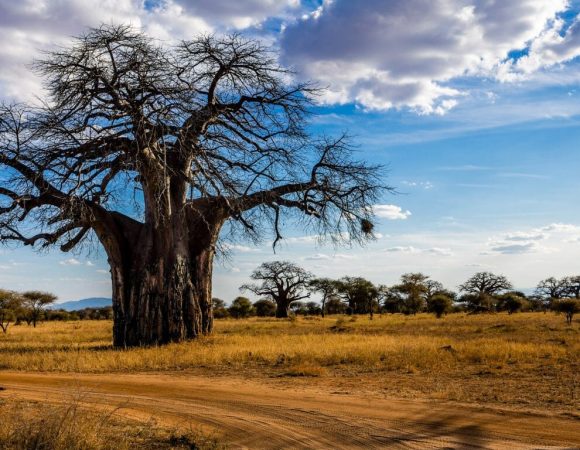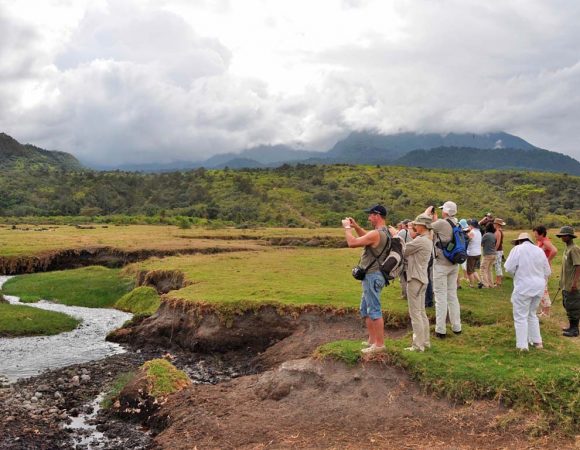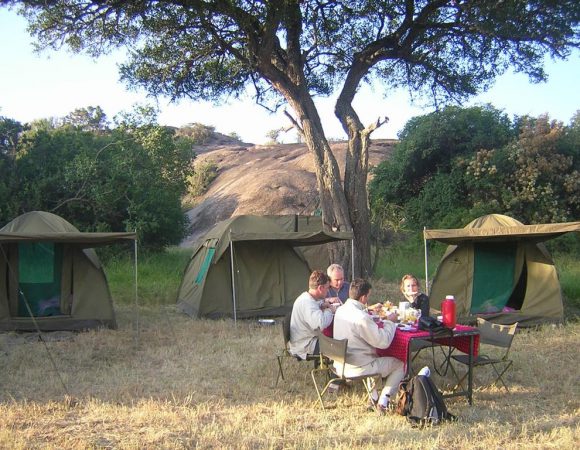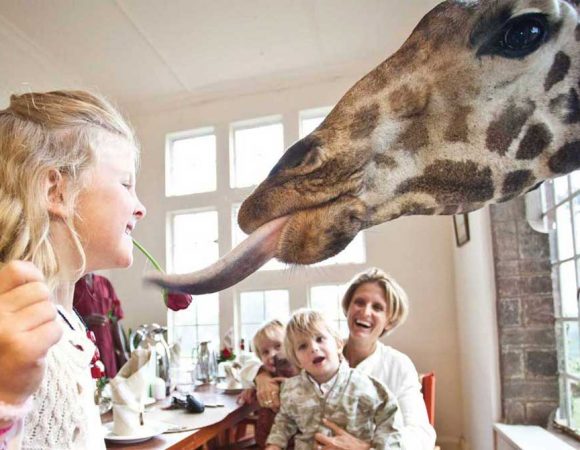- Home
- Ruaha National Park
Ruaha National Park
South-central Tanzania is home to the country’s largest national park, Ruaha, which spans an area of 20.226 square kilometers. Due to its size, Ruaha is in a remarkable position to be able to go on as it has always been an unspoiled, pure Eco-system, which is not only uncommon but also quite exceptional in today’s world.
Ruaha is home to an abundance of species, but the breathtaking, ever-changing scenery give the entire trip a certain mystical quality. A vacation with so much variety and excitement is made possible by the baobabs that dot the steep slopes, the cool green shade along the River, and the broad, grassy plains.
Animals are lured to the Great Ruaha River and other water sources during the dry season, when game watching is at its peak. Elephants are aware of subsurface water sources in the now-dry sand rivers (including the Mwagusi and Mdonya rivers), and they frequently dig holes to get this delicious water, which is also utilised by other animals.
It is lush, green, and quite picturesque with full rivers during the wet season. After the rainy season, the park is covered in a fresh coat of grass and leaves, and wonderful flowers of all kinds, including pink cleome, yellow daisies, and vast swaths of vividly colored ipomoeas and hibiscus, adorn the landscapes.
It would be great to visit the park more than once so that you can observe the significant changes that occur due to the excellent seasonal fluctuations.
The earliest known trade routes passed through the centre of Ruaha National Park, which is steeped in history. This route was first used by Arab commerce caravans in the early 19th century. By 1830, these coastal traders started taking routes that passed through what is now known as Dodoma and continued farther north of the park. Later, Burton and Speke (1857–58) and other early European explorers followed similar paths as well.
German East Africa was the name given to Tanzania when it fell under German rule in 1886.
Around the Ruaha region, the Wahehe people, led by the illustrious Chief Mkwawa, were the dominant tribe. From Njombe in the south, to Kilosa and Mpwapwa in the north, and from the Ruaha River to the Kilombero, he held major control over these regions. These guys gained notoriety for their courageous and effective combat strategies against the German invaders. Chief Mkwawa was driven into hiding in 1894 after a series of fights, but he persisted in his guerilla campaign for an additional four years, unfazed. It is believed that many of these hiding places were in what is now Ruaha National Park. His authority was eventually overthrown by the Germans in 1898, but the legend of this great chief endures, and his secrets are still hidden within this old, untamed region.
The Saba Game Reserve was established on a portion of the land that is now the park in 1910, under the German occupation. The British then proclaimed this area to be expanded and gave it the name Rungwe Game Reserve. Finally, the southern part of this reserve was designated the Ruaha National Park in 1964, and a modest addition to the park was made in 1974 to the south-east of the Great Ruaha River. Finally, in 2008, the Usangu wetland was added to the park’s limits, completing them exactly as they are now. Additionally, Ruaha National Park enjoys the good fortune of being nearly completely surrounded by wildlife reserves, making the entire ecosystem a large, essentially unexplored wilderness region covering more than 45,000 sq km.
Climate
The single rainy season in Ruaha National Park typically lasts from the end of November to the beginning of May. The Msembe HQ area in the Rift Valley experiences an annual rainfall of 500 mm, whereas the western high plateau region of the park experiences an average rainfall of 800 mm. Rainfall has a significant impact on the park’s ecosystem, which is reflected in the flora and animal migration.
The best time to visit Ruaha National Park is often from June through the end of July, when daytime highs of 300 C and nighttime lows of 80 C are the usual.
The next several months see a gradual rise in temperature, with November and December often being the warmest with daily highs of +/- 400 C and overnight lows of around 250 C, right before the rain starts to pour.
Wildlife
Due to the fact that this is the southernmost limit for smaller Kudu, seeing both lesser and greater Kudu is one of the unique attractions of Ruaha National Park.
Additionally, it is the southernmost extent of the Grants Gazelle, as well as Sable and Roan antelopes, Lichtenstein’s Hartebeest, Topi, both Southern and Bohor reedbuck, and Lichtenstein’s Hartebeest.
Sable, Roan, and Hartebeest sightings are frequent along the upper escarpment, known as the miombo woods, although they can also be spotted during the dry season in other places, such as Makinde Springs and in the direction of Lunda. On the other hand, topi are only present in the Usangu marsh plains.
In addition, Ruaha National Park is home to a sizable population of Wild Dogs, Leopards, Lions, Cheetahs, Buffalo, and Elephants, among many more species.
Birds
It’s hard to visit Ruaha National Park and not be awestruck by the quantity and variety of birds you observe, with 574 species documented there! This is facilitated by the wide variety of plant kinds and altitudes.
Here in Ruaha National Park, the Ruaha Red-billed Hornbill and the Ruaha Chat were discovered for the first time and given their names. However, it is now recognized that these two species are widespread in regions to the west of Ruaha. Additionally, Ruaha National Park’s position ensures that both southern and northern migrants come. People who are not especially interested in avifauna cannot overlook the richness of bird life at any time of the year!


